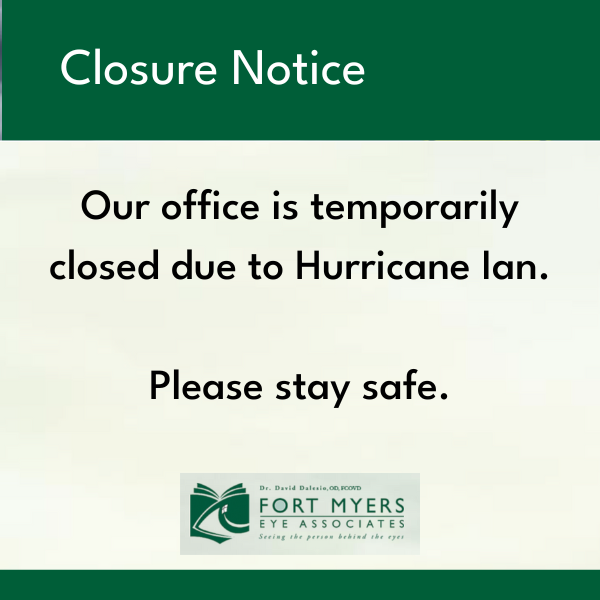When it comes to vision challenges, there are 2 common problems that both happen to be refractive errors: myopia and hyperopia. Myopia is best known as nearsightedness and can make distant objects blurry, while hyperopia is the opposite—it causes farsightedness, which means nearby objects may appear blurry.
Fortunately, both myopia and hyperopia can be treated with prescription eyeglasses, contacts, or corrective surgery, and can be diagnosed during a regular comprehensive eye exam with your optometrist.
What Is Myopia?
Myopia, also known as nearsightedness, is a common form of refractive error caused by the eye being longer than it is wide or by a curve in your lens or cornea.
In an eye without myopia, the eyeball is spherical with a lens on the front that helps refract light to a focal point located on the retina. This allows all the light rays to converge on a singular point where the eye can then send visual information to the brain.
When myopia occurs, the eye is longer than it is wide, or the natural lens or cornea is curved incorrectly. This causes light rays to converge in front of the retina, rather than directly on it.
The changes myopia causes in how light refracts inside your eye can lead to a blurry image being created, which is made worse the further away your eye is trying to focus.
Though the symptoms of myopia vary in severity on a person-to-person basis, they can include:
- Blurry vision
- The inability to focus on nearby objects
- Squinting
- Eye strain
- Headaches
- Frequent eye rubbing
- Eye fatigue
This condition typically develops in early childhood and continues to progress until late adolescence or early adulthood. However, there are several forms of myopia management available, and if caught early, the condition can be managed to minimize how far along it progresses.
How Is Myopia Treated?
Myopia is a common condition that affects many Americans. Fortunately, this means there are several ways to treat it. The most common form of vision correction for myopia is through the use of prescription eyeglasses or contact lenses. Prescription lenses can help your eyes focus light properly to reach the retina.
For children suffering from myopia, there are specialty contact lenses designed to reduce how the condition progresses, including:
- MiSight contact lenses, which can help reduce the elongation of the eye
- Orthokeratology, or ortho-k, contact lenses, which are worn at night to temporarily reshape the eye
In some situations, an optometrist may recommend a form of corrective surgery like LASIK. This surgery can help correct your refractive error but often requires a consultation with your optometrist to determine your eligibility.
What Is Hyperopia?
Hyperopia, also known as farsightedness, is another common form of refractive error. While myopia occurs when the eyeball is longer than it is wide, hyperopia is the opposite—it’s caused by the eyeball being wider than it is long or by your cornea or lens not having enough curvature to properly refract light to your retina. This leads to light being refracted to a focal point behind the retina, causing your eye to have difficulty building a clear image of nearby objects.
This condition is rarer than myopia and can be difficult to diagnose during childhood with standard vision screenings, such as those provided at school. If an eye chart is at a comfortably far-away distance, a person with hyperopia may be able to see it clearly, making it difficult to diagnose for children without a comprehensive eye exam.
Hyperopia can cause several symptoms, including:
- Difficulty seeing nearby objects while further objects remain clear
- Headaches
- Difficulty focusing on nearby tasks
- Eye fatigue or strain when working close to your eyes
- Discomfort
It isn’t just children that can suffer from hyperopia—adults can also develop this condition in some situations. This makes it essential to regularly visit your optometrist for comprehensive eye exams, so you can determine what may be causing your vision concerns.
How Is Hyperopia Treated?
Similar to myopia, hyperopia is a common enough condition that there are several methods available for treatment. Typically, an optometrist will recommend the use of prescription eyeglasses or contact lenses to correct your refractive error.
In some situations, an optometrist may recommend a form of corrective surgery. This requires a consultation appointment to determine whether or not corrective surgery can solve your vision concerns.
How to Treat Refractive Errors
Fortunately, due to how common both myopia and hyperopia are, treatment options can be found for many people’s needs. During a comprehensive eye exam, we can check your eyes to give you a diagnosis for what is causing your vision problems and provide recommendations for achieving clear vision.
At Fort Myers Eye Associates, we know how frustrating it can be when your vision isn’t clear. Schedule an appointment with us today to learn what’s causing your vision concerns, and let us help you with your refractive error.





